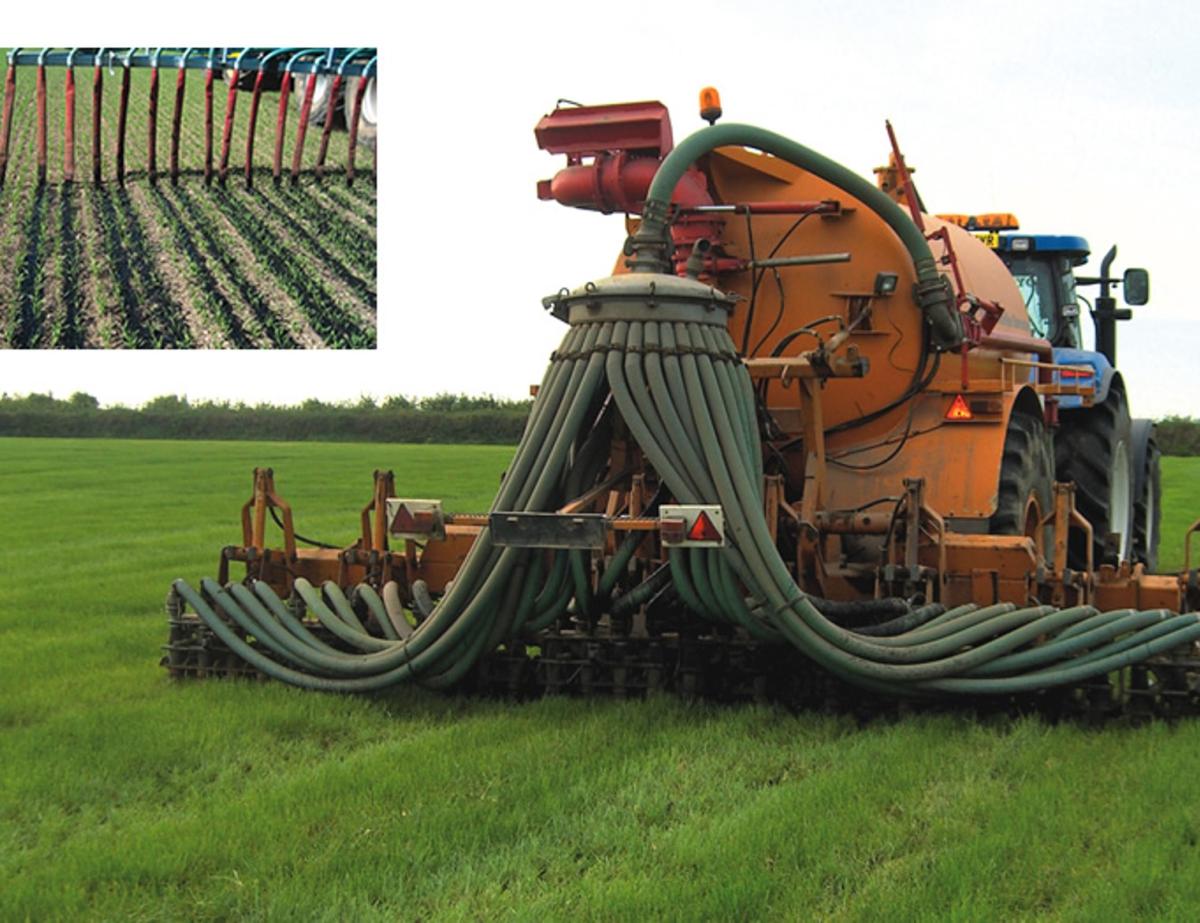Biofertiliser
The solid residues from anaerobic digestion of organic matter is referred to as either digestate or biosolids. Biosolids is the residue from anaerobic treatment of municipal sewage, while digestate is the residue from anaerobic digestion (AD) of other organic matter. Both materials can be beneficially used as a soil fertiliser and conditioner, although stricter regulatory limits apply to the application of biosolids to land in order to minimise potential health risk for humans, livestock and the environment. Digestate which meets specified quality limits is suitable for safe use as a fertiliser on land and is called digestate biofertiliser.
Processing of residual organic matter in an anaerobic digester (AD) produces biogas as well as the digestate or biosolids.
The residual organic matter processed as a feedstock in a digestor is the remaining material from food processing; from agriculture crop residues; manures; or from municipal waste after the quantities of organic material have been reduced by minimisation, recycling or reuse. Organic residues can have a high reuse or recycling value and are only waste when we decide not to use the organic matter for a beneficial use.
The pathways for treating organic material so that it can be applied to land are shown here.
Efficient and trouble free anaerobic digestion requires effective source segregation of organic waste from other types of waste. Improved collection of organic waste with increased focus of business and communities on separation at source has internationally proven to increase the level of recycling and reuse of organic waste which would otherwise have gone to landfill, hence underpinning the goal of the waste hierarchy.
Internationally most AD plants produce biogas for heat, electricity and use as a vehicle fuel, and biofertiliser from the digestate.
Anaerobic digestion or composting
Anaerobic digestion sits alongside composting as alternative processing technologies. Composting and AD processing of organic waste are both two well proven, extensively used and often complimentary technologies used world wide. The choice of processing pathway depends on the composition of the feedstock and the desired products produced in response to the local market demand and opportunities. In some applications with specific feedstock, composting will be the optimal processing path, while in other applications and feedstocks AD processing will be optimal. A benefit of AD processing compared to composting is that AD processing also produces valuable energy as well as a fertiliser.
In general, high energy feedstocks such as food waste are better suited for AD whereas high fibre feedstocks such as greenwaste are more suited to composting. Most importantly, they both keep waste out of landfills and hence substantially reduce greenhouse gas emissions and other environmental risks and impacts associated with that processing practice.
In general terms compost is an organic soil improver and digestate biofertiliser is an organic fertiliser. Compost should be produced to NZS 4454:2005 Composts, soil conditioners and mulches.
Application of biofertiliser to land
Digestate contains high levels of macro- and micro-nutrients and as such presents an environmentally sound alternative to mineral and synthetic fertilisers. Nevertheless, the use of digestate as biofertiliser has been limited by the perception of farmers, food wholesalers, food retailers, politicians, decision makers and the general public as being un-safe due to its origin from waste materials and animal by-products. This is generally because all residues from anaerobic digestion of organic waste have been considered as being a biosolid and thus within the regulatory limitations on sewage biosolids use. Because the characteristics are different separate consideration of the attributes of digestate and biosolids will assist in maximising the value of the products from anaerobic digestion of organic wastes.
Technical Guide 8 - The production and use of digestate as fertiliser provides guidance on the production of high-quality, safe and healthy digestate for use as biofertiliser. The goal is to provide incentives for further investment in anaerobic digestion applications for processing of source-segregated organic waste in New Zealand, Australia and the South Pacific, by improving the awareness of the monetary, social and environmental benefits this technology offers for the treatment of organic waste.
Guidance on the application of biofertiliser to land is available from:
- Compost and Digestate in Agriculture: Good Practice Guide
- Best Management Practices for Digestate
- Utilisation of digestate from biogas plants as biofertiliser
- Quality management of digestate from biogas plants used as fertiliser
- Digestate and compost use in agriculture
- Digestate quality amd fertiliser value
Regulations applying to application of organics to land
The Technical Guide 8 does not cover the application of biosolids to land. These are covered extensively in the Guidelines for Beneficial use of Organic Materials on land (Water NZ, 2020).
Detailed discussion on the regulations covering the application of digestate to land is set out in Technical Guide 8.
Accreditation of producers of digestate as biofertiliser
The Bioenergy Association has established a scheme for Accreditation of Digestate Biofertiliser Producers. The accreditation scheme is available to producers who produce and sell certified digestate biofertiliser. The accreditation scheme by an Operators Forum which undertakes research on the application of biofertiliser to soils, disseminates information on the use of biofertiliser on different soils, provides collective support to producers on meeting regulatory requirements and publishes material providing confidence to biofertiliser users on the efficacy of the digestate as a quality fertiliser.
[The scheme for accreditation of producers of digestate as a biofertiliser hwas developed with assistance of funding from the Waste Minimisation Fund. Most significant is that the criteria for accreditation were overseen by a Technical Steering Group of experts from across New Zealand. Information on the project is available here.]
The aim of the project was to have a scheme that accredits digestate producers; works towards achieving Fertmark certification of digestate as a biofertiliser; and provides confidence to digestate buyers that the digestate purchased meets the definition of being a fertiliser under the Agricultural Compounds and Veterinary Medicines Act 1997, (ACVM) and can be used as a quality biofertiliser that meets specific legislative standards.
Digestate which meets the criteria of the Producer Accreditation Scheme, and can be called a fertiliser, meets the requirement for exemption under the ACVM Regulations.
Technical Guide 8 sets out the criteria for producer accreditation and builds on the UK PAS110 Specification for whole digestate, separated liquor and separated fibre derived from the anaerobic digestion of source-segregated biodegradable materials which sets out the foundations for classification and criteria of digestate to be called a fertiliser.
Guidance for producers seeking accreditation is set out DBPAS 01 Digestate Biofertiliser Producer Accreditation Scheme. Accreditation is based on producers having a robust quality assurance based framework for digestate from source segregated feedstock.
Digestate which does not meet the criteria for the producer to be accredited is able to be applied to land only if it complies with the regulatory requirements of a biosolid.
To manage any risk of input materials such as discarded illegally imported raw meat, in particular those that are heat resistant spore formers (eg BSE) to animals, the biofertiliser is separated into Group A and Group B categories, depending on their origin and residual risk of pathogens and disease. For example, Group B does not contain any animal by products such as meat and so does not require pasteurisation.
The benefits from using digestate biofertiliser
A key aspect of interest to fertiliser users is that the fertiliser that they are using has known characteristics and is consistent in composition. The producer accreditation scheme focuses on the consistency of the anaerobic digestion process and the quality control on feedstocks, as both these affect the reliability and consistency of the produced fertiliser product.
With digestate classified as a biofertiliser and its fertilising characteristics identified and confirmed as being consistent the digestate is then ready for market distribution underpinned by the credibility of the producer's accreditation.

Supporting documentations
- Watch webinar introduction to the Scheme
- DBPAS 01: Digestate Biofertiliser Producer Accreditation
- DBPAS 05: Digestate Biofertiliser Certification
- DBPAS 07: Register of Biofertiliser Certification Scheme Documentation
- DBPAS 10: Characterisation of food derived biofertiliser
- Information Sheet 67: Certification of Digestate as a Biofertiliser
- Information Sheet 69: Biofertiliser - a Guide for Farmers and Regulators
- Technical Guide 8 - The production and use of digestate as fertiliser
- Technical note: Categories of Digestate Biofertiliser
- Technical note - Safety of digestate biofertiliser for land application
- Technical note - Plastics and Microplastics in Digestate Biofertiliser
